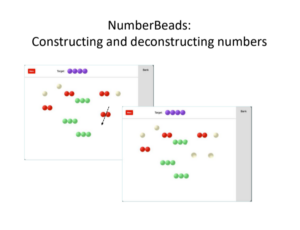Number Sense and Subitizing: 8 Ways Dyscalculic Learners Can Soar
In this video, Made for Math’s CEO Adrianne Meldrum and Professor Brian Butterworth discuss working memory, number sense, and subitizing. You’ll hear an insightful conversation about navigating dyscalculia research and translating that knowledge into something useful for teachers and parents. They explore the prevalence of dyscalculia and cover what’s next for Professor Butterworth.
Table of Contents
Meet Professor Brian Butterworth
Meet Professor Brian Butterworth, researcher and author of popular books Dyscalculia: From Science to Education, The Mathematical Brain, and his latest work Can Fish Count?. He is Emeritus Professor of Cognitive Neuropsychology at University College London and taught at Cambridge University for eight years. He is currently working on the neuroscience and the genetics of mathematical abilities and disabilities. Prof. Butterworth says his journey into this work all comes down to serendipity or just good ol’ luck. In 1989, Butterworth had a series of brilliant students come to London to work on language. One student in particular told him, “I don’t want to work on language. I want to work on something else.” Since Professor Butterworth has a background in foundational mathematics from a physiological logical standpoint he thought that it would be fun to do research from an empirical perspective. He suggested that they work on Acalculia, since no one else was researching this. Acalculia is an acquired disability where people have difficulty performing mathematical calculations. This is to be distinguished from dyscalculia–people with acalculia acquire the impairment later in life from a neurological injury, like a stroke. Whereas dyscalculia is a math learning disability first noticed when a person starts to learn mathematics. They were able to rediscover with more detail that there is an area in the brain in the left hemisphere that if damaged your numerical abilities will be severely affected. However, if the area is spared, then your numerical abilities will also be spared. This research made Professor Butterworth question “Well, why this area of the brain?” and “How does it develop?” This made him specifically start to think about just how numerical ability develops in humans and if you could find something similar in other creatures. (Que Can Fish Count?)Why is my child struggling?
In Professor Butterworth’s book Dyscalculia: From Science to Education he talks about domain-general and domain-specific in reference to the many reasons as to why a student might be struggling. Domain-general abilities are long-term memory, language, working memory, and reasoning. In the left hemisphere you would find domain-specific issues such as a struggle with number sense, which is very different than struggling with working memory. Butterworth found that you can either be good or bad at calculations when the domain-general abilities were either impaired or spared. He and his team also found that working memory is linked to numerical abilities. Not necessarily linked to dyscalculia, but it is linked to numerical abilities.One of Professor Butterworth’s key themes in his work is that “We inherit a capacity, sometimes called number sense, which underpins our ability to learn arithmetic.”Butterworth and his team also work with Corsi Blocks, which is a working memory task where the subject has to tap a series of blocks in the same order that the experimenter tapped them in. They found that a person’s ability to do Cousi Blocks correlates with their ability to do calculations. This means that there is a close connection between spatial working memory and your ability to do arithmetic. Adrianne points out that in the world of diagnostics, things can quickly become muddy because there aren’t as many professionals who understand the nuances that come with these types of brain-wiring differences. A student can get a diagnosis of a math learning disability, but is really being affected by these domain-general areas. They wouldn’t be struggling with a number sense issue, as the diagnosis implies, but perhaps a working memory issue.
Are you interested in learning more about dyscalculia? Check out this blog post on What is Dyscalculia? 6 Tips to Help my Struggling Child, here.
How can parents and educators better interpret data?
Professor Butterworth explains that it all depends on how the neuropsychologist has been trained, for example, there is no official government definition of dyscalculia in England. If you go to the Department of Education website and take a look at the reports you will find that having a diagnosis of dyscalculia doesn’t disqualify you from driving cars but it does disqualify you from driving heavy goods vehicles. Butterworth explains that the whole process would be easier if the government was more understanding and willing to listen to the experts when it comes to matters of education. Butterworth stresses that “Education is a political matter.” Scotland has an official working definition of dyscalculia even though the United Kingdom does not. In the United States we have the Individuals with Disabilities Education Act (IDEA) which ensures a free and appropriate education for children with disabilities. However, Adrianne doesn’t often see Dyscalculia mentioned in reports–they categorize dyscalculia as a specific learning disability in mathematics and then label the severity as mild, moderate, or severe. Which leaves parents walking away confused and not really sure what to do next. No one is communicating and using the same terminology and this becomes frustrating for parents. This miscommunication can be fixed but only with the right training. Teachers need to be trained to spot these differences in their students and also have an appropriate test to determine if they are struggling with domain-general or specific issues. To take it further, educational authorities would need to recognize dyscalculia at both the local and national levels. Educational Psychologists also would need training on assessment and intervention strategies for these students. Oftentimes, there are plenty of readily recognized conditions, like dyslexia, that the Educational Psychologist can use to explain number sense difficulties. If a child is diagnosed with ADHD, autism, or dyslexia they use that as an excuse as to why they are bad at math and don’t do further testing. He points out that it is not part of their course in school and even at his own university no one deals with dyscalculia anymore. Professor Butterworth continues to give professional development talks to Educational Psychologists about dyscalculia.What is the prevalence of dyscalculia?
With wider recognition of dyscalculia you will get a higher proportion diagnosed, but prevalence is different than recognition. The prevalence will stay the same–and there are a ton of different ways to do a prevalence test Professor Butterworth and his team have done two of the largest prevalence studies so far reported. They did this work in Cuba, because everyone there has a uniform education and you don’t have to factor in private academies–so they embed up doing a prevalence study for the entirety of Cuba. The Cuban prevalence study came up with 3 ½ to 4% of children are dyscalculic. An Israeli study, which used a completely different method, came up with about 5 or 6%. In another study in Australia, they classified dyscalculia at about 7%. Butterworth estimates that dyscalculia affects somewhere between 3 ½ to 7% of children. When you work out those numbers it becomes obvious that we need widespread recognition if we want to help the millions of people struggling with dyscalculia.What is Subitizing?
Subitizing is the ability to immediately recognize a number of items or dots without needing to stop and count the individual items. For example, when rolling dice and five dots show up, you are able to instantly know that the number is 5–without counting each dot. At MFM, we find that many of our students struggle with subitizing and immediately recognizing dot patterns. Professor Butterworth’s preferred method of testing for subitizing is having the student assess the number of dots in a randomly arranged dot pattern on display. The student will see seven dots and say out loud the number 7. They’ve also tested using dots and numbers or digits. For example, there are seven dots on one side and the number 7 on the other. The researcher would ask, do these two match? Another way to test for subitizing abilities is to show the student two dot patterns and ask which side has more dots. A cool thing about testing this way is that you can get animals to do the same task and compare humans to animals. There are pros and cons to each of these methods, but they are all trying to tap into the same underlying capacity of number sense or representing the number of objects in a set accurately. Someone’s inability to subitize is a strong indicator of dyscalculia when someone is young.Is dyscalculia just a problem with number sense?
When it comes down to it dyscalculia is a specific deficit in number sense. Which makes it more similar to most types of dyslexia, which is typically a phonological problem. Butterworth says that you sometimes see visual problems in dyslexia, but in a minority, most times it’s a phonological problem.Is dyslexia as common in other language-speaking countries?
Professor Butterworth and his team tested dyslexic students in Chinese and Japanese. In the 80s one of his students did a large study in China to see how many kids were dyslexic. He came up with a number that was very low–somewhere between 1 and 1 ½% compared to 6 to 7% in England or the United States. They found a similar pattern with Japanese-speaking students. Butterworth states that this is because the orthography is different and it doesn’t demand what English and Italian orthography demand.
English demands the ability to break up a syllable into component venues and in Chinese and Japanese each character is said as a whole syllable. So if you aren’t good at breaking up syllables into their components, in Chinese and Japanese it wouldn’t affect you very much.
This is how you can be dyslexic in one language, but not in another.
What is Professor Butterworth working on next?
Butterworth and his team are currently working on a game called number beads. The game is designed to help students with number sense and learn to construct and deconstruct numbers.

It has been tested in Singapore with kids who have low progress in mathematics and the results seem promising. They did a study with 900 kids and found improvement in their number sense with before and after tests. Now Singapore wants to use the number beads game in all of their schools across the country, because of the spectacular results they are getting.
Professor Butterworth is also in the middle of working on a game to improve place value skills.
We’re pretty lucky that one of Professor Butterworth’s students didn’t want to work on language all those years ago–or else we wouldn’t have all this awesome research about dyscalculia!
You can connect with Professor Brian Butterworth through his email or his website.
Did you know that we have an entire web series on Unlocking Dyscalculia? Fall down the rabbit hole, here.
💡 Is multisensory math right for you and your family?
If you are looking for professionals trained to work with kids with dyslexia, dyscalculia, ADHD, and more–you’re in the right place. See if multisensory math is right for you and your family!
MFM Authors

Jennie Miller
Marketing Assistant
is our Marketing Assistant and content creator here at Made for Math. Jennie loves being part of a company that is working to make mathematics accessible to children with dyscalculia.
